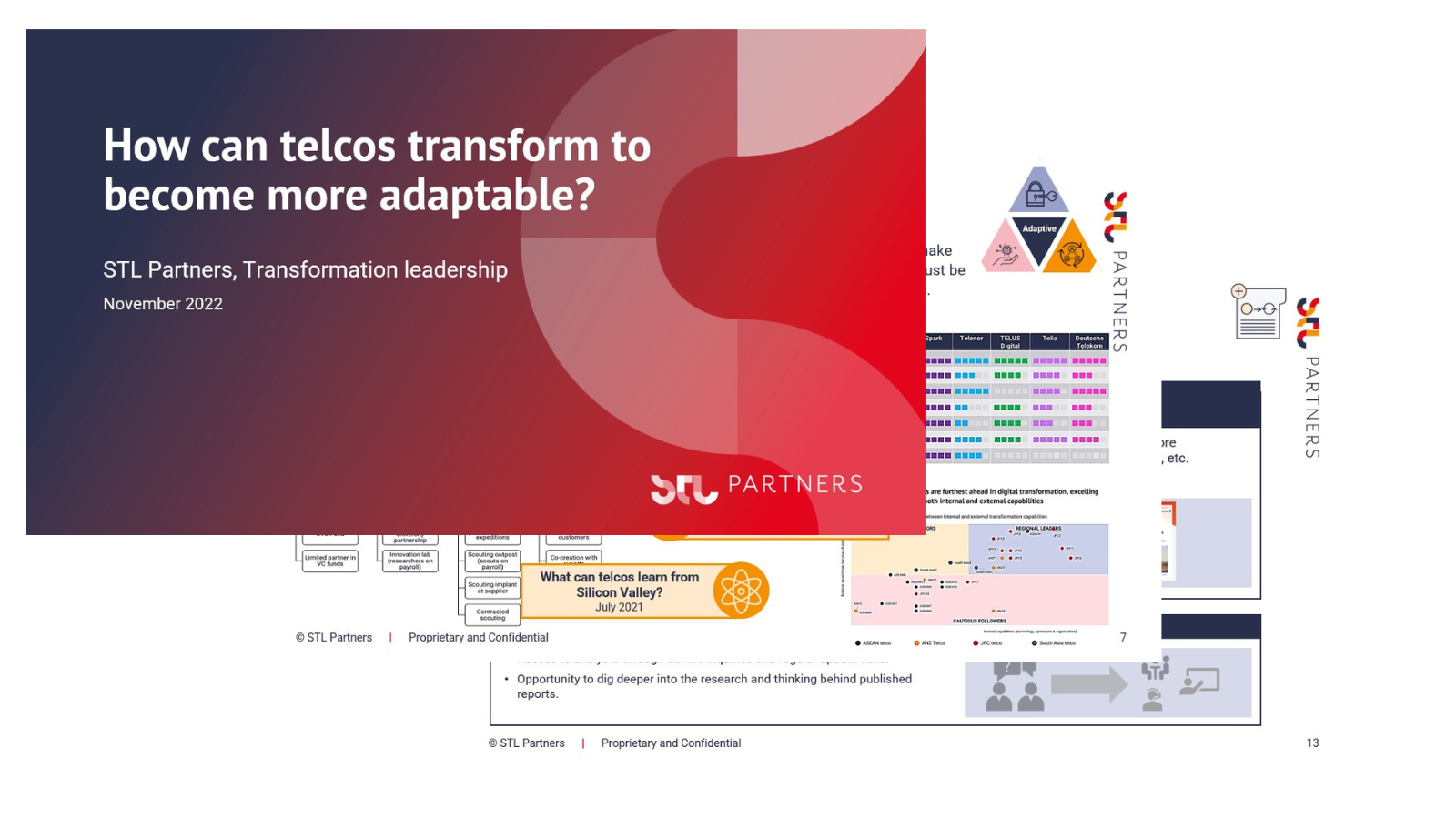
Latest NFV News & Announcements
Here at STL we have been following the developments of Telco Cloud for the past decade. Below is a selection of what we consider to be some of the most exciting recent developments in NFV & SDN, all of which have real potential to transform the current landscape.
Latest NFV News & Announcements Summary
| Company/Initiative | Highlights |
|---|---|
| Lean NFV | Aims to reduce complexity, ease deployment, encourage interoperability and spur innovation in NFV. |
| Microsoft’s Acquisition of Affirmed Networks | Microsoft enters the telecom industry to become a provider of solutions for mobile operators through Affirmed Networks. |
| BT’s Managed SD-WAN | Launches a new managed software defined wide area network (SD-WAN) service for UK business customers. |
| VMware and Deutsche Telekom’s vRAN Solution | Collaborating on a virtual Radio Access Network (vRAN) platform, designed to deliver agility to RANs for existing LTE and future 5G solutions. |
| NEC and Rakuten’s 5G Radio Units and Open RAN | Announced the production of their 5G radio unit (RU), which plays a key role in Rakuten Mobile’s fully virtualised cloud native mobile network. |
Lean NFV
Unveiled at ONS 2019 in San Jose, Lean NFV’s mission is to drastically simplify the complexity of implementing NFV. The movement argues that NFV has struggled to lift off because of the difficulty to deploy, which stems from several aspects of the current methodology, including the tight coupling between solutions and the management of the rest of the infrastructure, as well as the time-consuming process of on-boarding VNFs, as developers are not yet given clear and practical guidelines to ensure compatibility. Lean NFV was designed with these issues in mind, and aims to reduce complexity, ease deployment, encourage interoperability and spur innovation
Lean NFV proposes an open architecture that only specifies the minimal requirements for interoperability. This centres around the standardisation of three key integration points of the NFV architecture: NFV managers, the computational infrastructure (both bare metal or virtualised, and the connectivity between them, whether as a physical or virtual fabric) and VNFs. The model further requires an additional fourth element – a key-value (KV) store – that serves as a universal point of integration to improve coordination efforts of NFV solutions (specifically, management components and VNFs). By adopting these two measures, the community should be able to create a new NFV ecosystem that enables both easy deployment and rapid innovation.
Lean NFV thus proposes minimal requirements for all NFV deployments and developers to work towards. The resulting architecture is expected to be future-proof, given its suitability to cloud-native designs and the proposed 5G service-based architecture, both of which envision disaggregated VNFs and highly modular management. Components of the resulting ecosystem are likely to come from both commercial vendors and open-source efforts, and can be mixed and matched as desired. To initiate this process, Lean NFV is developing open-source VNF so that interested parties can see operational examples of this new approach.
Microsoft’s Acquisition of Affirmed Networks
Microsoft’s recent acquisition of Affirmed Networks, announced in March 2020, is set to provide Microsoft with an entry-point into the telecom industry, enabling Microsoft to become a provider of solutions for mobile operators. Affirmed Networks, who specialise in fully virtualised, cloud-native network solutions, develop tools that enable SDN capabilities, which are crucial for 5G infrastructure. This aligns Microsoft with developments that are set to revolutionise the telecoms industry, such as the transition to 5G (MarketsandMarkets estimate that the 5G infrastructure market will be worth $47.8bn by 2027) and network function virtualisation.
While traditionally telecom operators would build their own data centres filled with proprietary hardware, thanks to today’s virtualisation technologies, the large cloud platform providers are now able to offer the same capabilities and reliability at a much lower cost (although it must be noted that this transition may take a while, particularly due to perception issues around using a public cloud). Azure could thus serve as a core platform for 5G infrastructure, providing a link to bring cloud computing resources running on Azure into closer connection with the network infrastructure. This could speed up and ease the process of running cloud-based edge computing applications on 5G networks.
BT launches new Cisco-based Managed SD-WAN; expands BT’s portfolio of Cisco-based SDN and NFV solution sin the UK
Last March, BT announced the launch of a new managed software defined wide area network (SD-WAN) service for UK business customers. This managed service offers a fully converged software defined solution that combines BT’s capabilities into a single customer solution, bringing together offerings including fixed line connectivity, mobile data, dedicated security expertise as well as managed services with a single point of contact. According to BT, this offering is set to enable secure, high-bandwidth connections across multiple sites using fixed and mobile networks.
BT’s managed SD-WAN is set to simplify network infrastructure, replacing the complexity of traditional networks with one smart, secure network. This will provide customers with more information to enable them to make the best possible decisions and boost efficiencies, to optimise traffic around their requirements, while balancing performance and agility, thus resulting in better business performance.
As part of the launch, BT is offering two different managed SD-WAN options, including Cisco SD-Wan powered by Viptela, and Cisco SD-WAN powered by Meraki. This launch builds on the announcements made with Cisco in 2018, and further expands BT’s portfolio of Cisco-based SDN and NFV solutions in the UK.
“Our customers are looking for the next generation of intelligent connectivity, but they often don’t have the resources to implement this on their own. Our fully managed service capability with an SD-WAN solution removes these barriers and brings secure connectivity and control across all customer devices and applications, so they can react faster and work smarter.” says Steve Best, MD, Customer Solutions, BT.
VMware and Deutsche Telekom develop vRAN solution
VMware and Deutsche Telekom announced in February 2020 that they are collaborating on a virtual Radio Access Network (vRAN) platform, which has been developed based on O-RAN standards, an offering which is set to deliver agility to RANs for existing LTE and future 5G solutions. The solution is currently undergoing testing and validation at Deutsche Telekom’s headquarters, located in Bonn, Germany. “In a 5G world, the RAN needs to become software-defined in order to meet the needs of CSPs, and what we’re proposing with this open and intelligent vRAN platform will do exactly that” (Skehar Ayyar, executive VP and general manager of telco and edge cloud at VMware)
In line with the move to virtualisation, which is seeing an increasing number of service providers moving to virtualise all parts of their network, an open vRAN is an essential component to deliver applications and services over a 5G network. As explained by Alex Jinsung Choi (SVP Strategy & Technology Innovation at Deutsche Telecom), the work with VMware and Intel aims to address scalability for the vRAN layer deployment. The Open RAN solution architecture uses standards-based Intel processors and FlexRAN to run vRAN workloads on top of VMware’s telco cloud platform, optimised for real-time and low latency workloads.
Deutsche Telekom are further collaborating with Cohere Technologies and Mavenir, to develop a VMware-developed pre-standard, near-real-time RAN Intelligent Control. This will enable real-time radio resource management capabilities to be delivered as applications on top of the platform.
“Virtualizing the RAN is an important step in the 5G future that will enable innovative services at the edge. Through this collaboration we aim to demonstrate how standards-based hardware and software can accelerate new types of network deployments,” explained Cristina Rodriguez, vice president and general manager of Intel’s Wireless Access Network Division.
NEC and Rakuten’s 5G radio units and open RAN
Rakuten Mobile, Inc. and NEC corporation recently announced (March 2020) that the production of their 5G radio unit (RU), jointly developed by the two companies, has started at NEC Platform’s Fukushima plant, and that the first unit has been shipped.
The 5G RU is set to play a key role in Rakuten Mobile’s fully virtualised cloud native mobile network, according to Tareq Amin, Rakuten’s Representative Director, Executive Vice President and CTO. With its launch, Rakuten Mobile is poised to start construction of their 5G base stations, starting in the Tokyo area with the ultimate objective of providing subscribers with a cost efficient, highly secure, high quality 5G service. They expect to launch their 5G commercial services in June 2020.
Rakuten Mobile aims to utilise the technology to enable new business opportunities to “solve social issues and contribute to regional development”. NEC, with its focus on providing “Solutions for Society”, is set to leverage its background in network construction to support operators globally in developing their 5G networks and contributing to the creation of new mobile services around the world.
The 5G RU produced at NEC’s Fukushima plant conforms with open architecture standards, and comes in a compact form factor with low power consumption (Atsuo Kawamura, EVP & President of the Network Services Business Unit at NEC).
This move marks a step closer for Rakuten Mobile on their journey to building the first ever End-to-end fully virtualised cloud native network. NEC and Rakuten are further collaborating on the development of BSS and OSS solutions for Rakuten Mobile’s 4G network operations.
Read more about telco cloud
Telco cloud insights pack
This document will provide you with the latest insights from our research and consulting work, including some extract of our Telco Cloud Manifesto 2.0, and our latest analysis on open RAN
Network APIs: Unlocking new value in the telco cloud
Network APIs may offer an answer to the question of how to monetise recent and upcoming telco cloud deployments. Virtualised networks upgrade APIs and enhance the value they offer to developers and customers. To unlock their potential, telcos should focus on optimising their commercial models.
Network Futures overview pack
Our Network Futures Service provides a roadmap for new network ownership, regulation and partnership models, and insights. into new technologies, industry dynamics and new players.
Core-as-a-Service since 2018: Wgtwo
Core-as-a-Service is not a brand new concept. Working Group Two, aka wgtwo – a smaller Scandinavian outfit, has been offering Core-as-a Service since 2018. We spoke to their CEO Erlend Prestgard about why wgtwo’s original mission to help telcos extract more value from connectivity remains as relevant in 2022.




